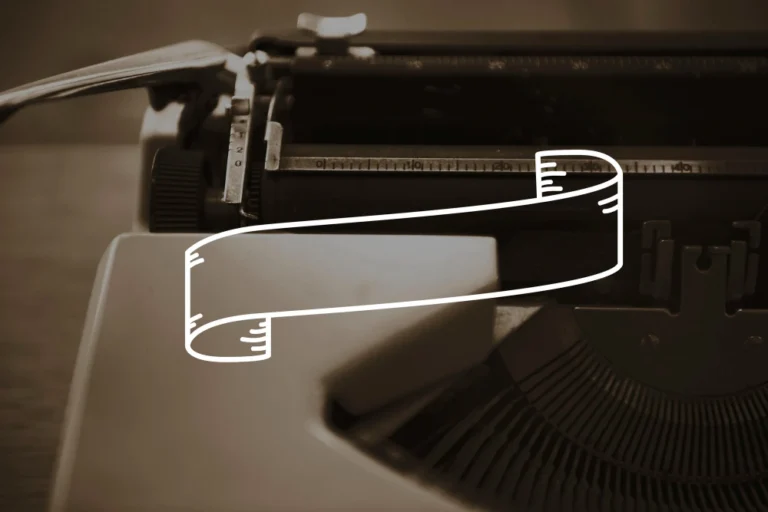Imagine the World Wide Web in its infancy – a sprawling, chaotic, and largely unmapped digital territory. You needed information, maybe for a school project or just out of curiosity. How did you find it? You might have typed a query into a stark interface, hit ‘Search,’ and waded through pages of often bizarrely irrelevant results, hoping for a lucky strike. Or perhaps you meticulously clicked through hierarchical directories, hoping someone had categorized the site you needed. This was the reality before Google became a verb. Let’s journey back to explore the pioneering, popular, and now largely forgotten search engines that first tried to tame the web.
The Genesis Era: Charting the Pre-Web (Late 1980s – Early 1990s)
[ERA IMAGE SUGGESTION: A screenshot of the command-line interface for the Archie FTP search tool. Circa early 1990s.]
Before the World Wide Web as we know it, the internet existed primarily as a network for universities and researchers, focused on email, newsgroups, and file transfer. Finding information wasn’t about searching web pages, but about locating files or navigating menu systems.
The first tool widely recognized as an internet search engine was Archie, created in 1990 by Alan Emtage at McGill University. Archie (short for “archive”) didn’t crawl web pages; it indexed the file listings of public File Transfer Protocol (FTP) sites. You could use Archie to find specific downloadable files across the internet – a crucial task at the time, but limited to filenames. Soon after, Veronica and Jughead emerged to search the menu titles and directory names within the popular Gopher information system, another text-based precursor to the web. These tools were vital for navigating the pre-web internet, but they couldn’t search the content of documents.
Tech Spotlight: Archie (1990)
- Function: Indexed filenames available on public anonymous FTP servers.
- Technology: Downloaded directory listings, created a searchable database. Accessed via Telnet or email queries.
- Significance: Considered the first internet search engine, focused on finding files, not web content. Solved a key problem for early internet users.
Parallel Developments
The World Wide Web protocol (HTTP) and HTML were being invented by Tim Berners-Lee. Early web browsers like WorldWideWeb (later Nexus) and Line Mode Browser were created. Gopher was a popular alternative information system.
User Experience Snapshot
Finding a specific program or document meant logging into an Archie server via Telnet, typing precise filename queries (often using wildcard characters), and sifting through lists of server addresses and file paths. It was powerful for those who knew how to use it, but far from user-friendly and limited to finding known files.
The Breakthrough Years: Crawlers & Curators (1993 – 1995)
[ERA IMAGE SUGGESTION: A screenshot of the early WebCrawler search interface, emphasizing its status as an early full-text engine. Circa 1994.]
As the World Wide Web began to grow, driven by browsers like NCSA Mosaic, the need to search the actual content of web pages became apparent. The first wave of web search engines emerged, experimenting with different approaches.
Early attempts like W3Catalog (1993) relied on manually maintained lists, while Aliweb (1993) required website owners to submit index files in a special format – neither scaled well. JumpStation (1993) combined crawling, indexing, and searching. But the first widely successful engine to crawl and allow searching of the full text of web pages was WebCrawler, launched in April 1994 by Brian Pinkerton. Though its index was initially small, the ability to search for any word within a page was revolutionary.
Hot on its heels came Lycos (May 1994), born from Carnegie Mellon University, which also crawled the web and built a larger index. Simultaneously, a different approach gained immense popularity: Yahoo! Directory (launched January 1994 as “Jerry and David’s Guide to the World Wide Web”). Instead of algorithms, Yahoo! used human editors to categorize websites into a hierarchical directory. Users could browse categories (Arts, Business, Computers, etc.) or search the directory listings. For a time, Browse the curated Yahoo! Directory was often more effective than the still-primitive algorithmic search engines.
Tech Spotlight: WebCrawler (1994)
- Innovation: First widely used web search engine to provide full-text indexing by crawling web pages. Allowed searching for any word within a page, not just titles or submitted descriptions.
- Impact: Set the standard for future crawler-based search engines. Proved the feasibility of indexing the growing web’s content.
Tech Spotlight #2: Yahoo! Directory (1994)
- Approach: Human-edited, hierarchical directory of websites, organized by topic.
- User Experience: Browse categories or searching curated site descriptions. Often provided higher quality results than early algorithmic search for broad topics.
- Impact: Became the dominant way many users navigated the web in the mid-90s, acting as both a directory and a portal. Later integrated algorithmic search results.
User Experience Snapshot
Suddenly, you could type keywords into WebCrawler or Lycos and get back pages containing those words! The results weren’t always relevant, often just listing pages where your keyword appeared frequently, but it felt powerful. Alternatively, you could spend hours clicking through Yahoo!’s categories, discovering interesting sites curated by actual people. Finding information started to feel less like searching for a needle in a haystack.
The Refinement Period: The Portal Wars & Algorithm Race (Mid – Late 1990s)
[ERA IMAGE SUGGESTION: A screenshot of the AltaVista search engine homepage from the late 90s, known for its powerful (though complex) search options and large index. Circa 1997.]
The mid-to-late 90s saw an explosion of new search engines, each vying for dominance and often becoming the centerpiece of large web portals offering email, news, chat, and other services. Competition was fierce, driving innovation in indexing technology and search features.
AltaVista (launched December 1995 by Digital Equipment Corporation) was a technological powerhouse. It boasted a massive index (for the time), incredibly fast searching, and the first multilingual search capabilities. It offered powerful, complex search query options (using Boolean operators like AND, OR, NOT) favored by power users. Excite (launched 1995) tried a different approach, using statistical analysis of word relationships (“concept-based search”) to try and improve relevance. Others like Infoseek, HotBot (backed by Wired magazine), and LookSmart (another directory) also competed for eyeballs.
However, relevance remained a major challenge. Most engines primarily ranked pages based on keyword frequency and placement (like in titles or meta tags). This made them highly susceptible to manipulation (“keyword stuffing” and other early SEO spam tactics), often leading to frustratingly irrelevant results for users. The portals surrounding the search engines also grew increasingly cluttered with banner ads and myriad features, detracting from the core search experience.
Tech Spotlight: AltaVista (1995)
- Strengths: Very large web index (claimed to index more pages than competitors), extremely fast crawling and searching, advanced search syntax, multilingual capabilities, introduced image/video/audio search early on. Provided the backend search for Yahoo! for a time.
- Weaknesses: Relevance ranking based primarily on on-page factors, making it vulnerable to spam. Its interface, while powerful, could be intimidating. Later became cluttered as part of portal strategies.
- Impact: Set a high bar for indexing speed and scale. Popular among researchers and power users. Its eventual failure highlighted that index size alone wasn’t enough; relevance was key.
Monetization Strategies
Most of these engines/portals relied heavily on banner advertising. Some experimented with paid inclusion or prioritizing partners in results, further muddying relevance.
User Experience Snapshot
You might have bookmarked multiple search engines, trying the same query on AltaVista, Excite, and Lycos to see which gave better results. Using AltaVista’s advanced search felt powerful if you knew the syntax, but often overwhelming. Portal pages were busy and distracting. Finding exactly what you wanted often still required persistence and wading through irrelevant links. “Search engine optimization” started as webmasters tried to game the simple ranking algorithms.
The Revolution: Enter Google & PageRank (1998 – Early 2000s)
[ERA IMAGE SUGGESTION: The iconic, minimalist Google search homepage from its early days. Circa 1998-2000.]
Amidst the cluttered portals and relevance struggles of the late 90s, a new player emerged from a Stanford research project. Larry Page and Sergey Brin launched Google Search in 1998 (after a beta period). Google’s approach was radically different in two key ways:
- PageRank Algorithm: Instead of just looking at keywords on a page, Google’s core innovation, PageRank, analyzed the link structure of the web. It treated links from one page to another as “votes.” Pages receiving links from many other pages, especially important pages (those with high PageRank themselves), were considered more authoritative and relevant, and thus ranked higher. This link analysis proved dramatically better at surfacing high-quality, relevant results and was much harder to spam than simple keyword-based ranking.
- Clean Interface: Google launched with an extremely simple, fast-loading homepage containing little more than its logo, a search box, and two buttons. This stood in stark contrast to the busy, ad-laden portals of its competitors and resonated strongly with users seeking quick, relevant answers.
Google’s superior search relevance quickly attracted users, spreading rapidly through word-of-mouth. While competitors were focused on building portals, Google focused relentlessly on search quality. Established players like AltaVista, Excite, and Lycos, often burdened by portal strategies dictated by corporate owners (Compaq, @Home, Terra Networks respectively) and slower to adapt their core ranking algorithms, couldn’t compete on relevance and began to fade.
Tech Spotlight: Google PageRank
- Concept: An algorithm analyzing the quantity and quality of links pointing to a webpage to determine its relative importance and authority.
- Impact: Provided significantly more relevant search results than competitors relying primarily on on-page keyword analysis. Became the foundation of Google’s search dominance.
Gained / Lost
- Gained: Dramatically improved search relevance, faster and cleaner search experience (Google).
- Lost: The diversity of the search engine landscape. The portal model bundled with search began to decline.
User Experience Snapshot
Trying Google for the first time often felt like a revelation. You typed a query and got back results that were actually useful on the first try, far more often than with other engines. The clean, fast homepage was refreshing. Google quickly became the default, go-to search engine for most people.
The Modern Landscape: Living in Google’s Shadow (Early 2000s – Present (2025))
[ERA IMAGE SUGGESTION: A modern Google search results page, perhaps showing rich snippets, knowledge panels, and ads, illustrating its evolution beyond simple links.]
The aftermath of Google’s rise was swift and decisive. By the early-to-mid 2000s, Google had achieved overwhelming global market share, a dominance that continues largely unabated into 2025 across most of the world, including India.
What happened to the pioneers?
- AltaVista: Acquired by Overture Services in 2003, which was then acquired by Yahoo!. The AltaVista brand was finally retired by Yahoo! in 2013, redirecting to Yahoo! Search.
- Lycos: Sold multiple times (to Terra Networks for billions, then Daum Communications for millions, then Ybrant Digital). Still exists as a web portal but holds negligible search market share.
- Excite: Went through bankruptcy (@Home), acquisitions (InfoSpace, Ask Jeeves). Still exists as a portal, largely forgotten as a search innovator.
- WebCrawler: Acquired by AOL, then Excite, then InfoSpace. Still exists as a metasearch engine, aggregating results from Google and others.
- Infoseek: Largely folded into Disney’s failed Go.com portal.
- Yahoo! Search: Transitioned from its directory focus, licensed technology from others (including Inktomi, Google briefly, and now primarily Microsoft Bing). Remains a portal but not a primary search innovator.
While alternatives like Microsoft Bing and privacy-focused DuckDuckGo exist and hold small market shares, the search landscape today is vastly different from the diverse, experimental era before Google. Recalling engines like AltaVista or Lycos is now an exercise in internet archaeology.
Heritage Impact
These forgotten engines were crucial stepping stones. Archie proved indexing was possible. WebCrawler introduced full-text search. Yahoo! pioneered human curation. AltaVista pushed the boundaries of scale and speed. Their innovations, and crucially their failures in relevance and user experience, created the opportunity that Google seized with PageRank, fundamentally shaping how we access information online today.
Full Circle Reflections
The quest began with simple tools to find files on a small network. It evolved into attempts to index the chaotic explosion of the World Wide Web, first through human effort (Yahoo!) and then increasingly complex algorithms (AltaVista, Excite). Ultimately, the key wasn’t just indexing everything, but understanding relevance and authority, the puzzle Google solved most effectively with PageRank, combined with a user-focused interface. We journeyed from a diverse ecosystem of flawed pioneers to a landscape dominated by one highly efficient, algorithmically curated giant.
FAQ: Searching Through History
- What was the very first search engine? The first internet search engine was Archie (1990), which indexed files on FTP servers. The first web search engine to crawl and index full-text content of pages was arguably WebCrawler (1994), though others like JumpStation existed slightly earlier with crawler technology.
- What search engines existed before Google (launched 1998)? Many! Key examples include Archie (FTP), Veronica/Jughead (Gopher), WebCrawler, Lycos, Yahoo! Directory, Infoseek, Excite, AltaVista, HotBot, and LookSmart.
- Why did powerful engines like AltaVista fail against Google? While technically powerful with large indexes and fast speeds, AltaVista’s relevance ranking (based mainly on page content) was easily spammed and often produced less useful results than Google’s PageRank (link analysis). Strategic missteps, like becoming a cluttered portal under owners like Compaq, also hurt its focus and user experience compared to Google’s clean interface.
- How was the original Yahoo! different from a search engine? Yahoo! initially started (1994) as the Yahoo! Directory, a human-edited, hierarchical list of websites categorized by topic. You browsed categories rather than relying solely on algorithmic search. It later integrated crawler-based search results alongside its directory.
What made Google’s search results better initially? Google’s core innovation was the PageRank algorithm. It analyzed the link structure of the web, considering links as “votes.” Pages linked to by many important pages ranked higher, leading to significantly more relevant and authoritative results compared to engines relying mainly on keyword matching on the page itself. Its simple, fast interface was also a major draw.






